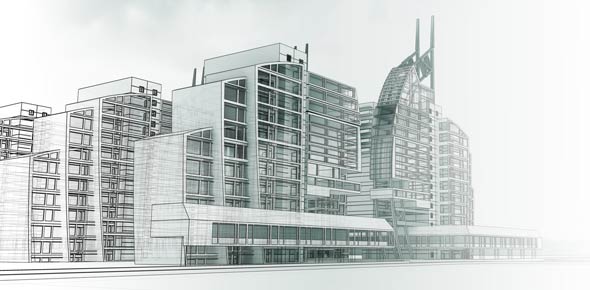Building Technology Quiz Questions

This is a sample quiz for the review. Sign up to gain access to the full test quizzes.
Questions and Answers
- 1.
The Filipino term for horizontal stud is
- 2.
The horizontal distance from the face of a lock or latch to the center of the knob is called a backset.
- A.
True
- B.
False
Correct Answer
A. TrueExplanation
The statement is true because the horizontal distance from the face of a lock or latch to the center of the knob is indeed called a backset. The backset measurement is important for determining the compatibility of a lock or latch with a door, as it ensures that the knob or lever can be properly installed and function correctly.Rate this question:
-
- 3.
A commercially pure iron of fibrous nature, valued for its corrosion resistance and fibrous nature is called
- A.
Wrought iron
- B.
Black iron
- C.
Cast iron
Correct Answer
A. Wrought ironExplanation
Wrought iron is a commercially pure iron that is known for its fibrous nature and corrosion resistance. It is valued for its strength and durability, making it suitable for various applications such as gates, fences, and decorative items. Unlike cast iron, which is brittle and prone to breakage, wrought iron can be easily shaped and forged into different forms. Its fibrous structure gives it a unique appearance and texture, adding to its aesthetic appeal. Therefore, the correct answer for the given question is wrought iron.Rate this question:
-
- 4.
Do you think this website can be of help for you in the architecture board exam?
- 5.
A roofing tile which has the shape of an “S” laid on its side is a
- A.
Pantile
- B.
Mission Tile
- C.
French Tile
Correct Answer
A. PantileExplanation
A pantile is a type of roofing tile that has the shape of an "S" laid on its side. It is a curved tile that is commonly used in Mediterranean and Spanish-style architecture. The shape of the pantile allows for efficient water drainage and provides a visually appealing pattern when installed on a roof.Rate this question:
-
- 6.
That part of the building foundation which forms the permanent retaining wall of the structure below grade is a
- A.
Foundation course
- B.
Grade beam
- C.
Foundation wall
Correct Answer
C. Foundation wallExplanation
A foundation wall is the correct answer because it refers to the part of the building foundation that serves as a permanent retaining wall below grade. This wall provides support and stability to the structure, preventing soil erosion and maintaining the integrity of the foundation. It is typically made of concrete or masonry and is designed to withstand the pressure exerted by the surrounding soil.Rate this question:
-
- 7.
Joint employed to reduce restraint by accommodating movement of masonry walls are known as
- A.
Cold joint
- B.
Control joint
- C.
Block out
Correct Answer
B. Control jointExplanation
Control joints are joints that are intentionally created in masonry walls to allow for movement and reduce restraint. These joints are designed to accommodate the expansion and contraction of the masonry due to temperature changes and other factors. By providing controlled points of separation, control joints help to prevent cracking and damage to the masonry walls. Cold joints, on the other hand, refer to joints that are unintentionally created due to a delay in the placement of concrete or masonry. Block out joints are not specific to reducing restraint in masonry walls.Rate this question:
-
- 8.
A system of framing a building in which the studs are continuous to roof supporting second floor joints is known as
- A.
Post and beam
- B.
Western framing
- C.
Balloon framing
Correct Answer
C. Balloon framingExplanation
Balloon framing is a system of framing a building where the studs run continuously from the foundation to the roof, supporting the second-floor joints. This method became popular in the mid-19th century and was commonly used in North America. It allowed for faster and more efficient construction compared to traditional post and beam or western framing methods. The continuous studs provide structural stability and allow for the construction of taller buildings.Rate this question:
-
- 9.
Rough plaster finish obtained by flinging plaster on a wall with a hand operated machine is
- A.
Tyrolean finish
- B.
Trowel finish
- C.
Broom stripped finish
Correct Answer
A. Tyrolean finishExplanation
The correct answer is tyrolean finish. A tyrolean finish is achieved by flinging plaster onto a wall using a hand-operated machine. This technique creates a rough and textured surface, which is commonly used for exterior walls to provide both decorative and protective properties. The plaster is applied in a way that creates a patterned effect, giving the wall a unique and visually appealing finish.Rate this question:
-
- 10.
A principal member of the truss which extends from one end to the other primarily to resist bending is a
- A.
Web member
- B.
Girt
- C.
Chord
Correct Answer
C. ChordExplanation
A principal member of the truss which extends from one end to the other primarily to resist bending is a chord. Chords are horizontal or inclined members that provide stability and support to the truss structure. They are typically located at the top and bottom of the truss and are responsible for resisting the bending forces that act on the truss. Chords play a crucial role in maintaining the structural integrity of the truss and ensuring its stability under various loads and conditions.Rate this question:
-
Quiz Review Timeline +
Our quizzes are rigorously reviewed, monitored and continuously updated by our expert board to maintain accuracy, relevance, and timeliness.
-
Current Version
-
Mar 21, 2023Quiz Edited by
ProProfs Editorial Team -
Jun 11, 2011Quiz Created by
Arkireviewmaster
 Back to top
Back to top


